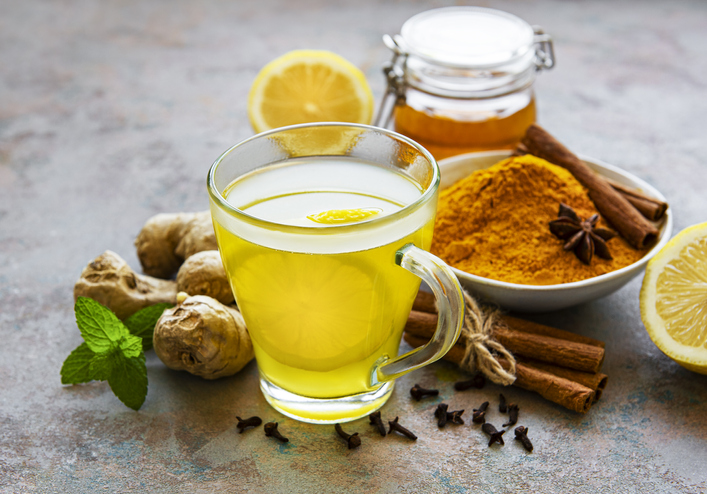Prioritizing health, nutrition and wellness are a long-term trend, but how can any hotelier distill this multi-decade progression into one or two action items that can elicit measurable results over the next few quarters? You may not have a spa or capex for wholly new programming, so start small and start with F&B – an operation that nearly all hotel guests experience during their stays.
When it comes to food, the term ‘biohacking’ encompasses any and all additions to the plate that can literally hack the eater’s (or drinker’s) internal biology to elicit a positive health benefit – ‘superfoods’ as a synonym in this regard. Typically, these are smaller additions seldom comprising the bulk of the caloric intake but help to catalyze the macronutrient processing of the primary meal components.
To give you an idea of this, let’s list some off, along with more scientific terms to substantiate their advantages, then run through how to market and measure these superfoods to evaluate whether or not there’s a larger appetite for more wellness programming within your brand.
- Garlic (contains sulfurous thiols that are antimicrobial, although not the best for the breath)
- Turmeric (plenty of documentation on its anticancer effects)
- Apple cider vinegar (blunts insulin response following carbohydrate intake)
- Caperberries (highest in quercetin, a longevity antioxidant also found in onions and fruits)
- Parsley (contains PQQ and apigenin which promote energy restoration in the cells)
- Cilantro (a powerful chelator that removing heavy metals; tastes like soap for some people)
- Brazil nuts (very high in selenium which is important for mercury chelation)
- Spirulina (contains the anticancer molecule phycocyanin and helps chelate aluminum)
- Marine collagen (vegan form of bovine collagen; over 30% of bodily protein is collagen)
- Edible flowers (providing a whole color wheel of antioxidants and other beneficial compounds)
Besides your career goals as a hotel operator, we hope you start incorporating these foods into your diet. And the ten biohacking foods here are hardly an exhaustive list, so part of the experience is exploring all the other superfoods at your disposal (check out gac fruit from Vietnam which contains extremely high levels of lycopene, the predominant polyphenol in tomatoes).
Perhaps, though, you can already envision how these may play out as menu additions. Some ideas:
- Most breakfasts contain a yoghurt bowl with some combination of fruit, nuts and seeds, where a dollop of Brazil nuts or spirulina can be a two-dollar extra
- At the smoothie bar, spirulina and marine collagen are already proven add-ons often priced at three or four dollars more per scoop
- Collagen, vegan or animal-derived, is now often sold under the buzzy ‘bone broth soup’ which can be great for winter menus
- As practically the only two salty fruits, caperberries and olives would make for a nice appetizer
- With people looking for alcohol alternatives, turmeric has been a mainstay when sold as ‘golden milk’ (nut milk, turmeric, cinnamon, ginger, black pepper and honey all boiled together)
- Likewise for dieters and as a digestif, apple cider vinegar, lemon juice, honey and sparkling water combine well into a restorative tonic
- For parsley, cilantro and edible flowers, these can all be sold as individual add-ons to a salad or main or combined as a ‘fresh herbs and flowers’ addition
From these ideas, you can see that nothing here is breaking the bank and nothing here is going to add seven figures to the bottom line either. Instead, it’s about testing the waters.
Is there potential, both for future expansion of the healthy food options for your restaurant or as room service offerings? How would you know whether it’s time to carve out a second restaurant devoted to nutritional eating? How receptive would these health-conscious diners be for other wellness products beyond F&B like spa, sleep programs or in-room fitness? These are the strategic questions we answer as part of any consulting assignment, then develop a plan for rolling out
Let’s focus on the singular example of offering a handful of Brazil nuts as a $2.50 extra to the yoghurt bowl (with the assumption that this is well-typeset in both the physical and digital menus so that it’s visible). Restaurant guest purchases of this add-on will be recorded within the POS; from there you can do a basic before-and-after comparison to determine whether the availability of Brazil nuts was purchased in a significant amount and also if this addition increased total sales of the yoghurt bowl.
Connecting your POS to the guest profile data in your PMS (whether it’s a two-way integration or piping the data into a third entity like a CRM) allows for even more end-to-end feedback and analysis. If you know an overnight hotel guest purchased the Brazil nuts addition, you could set up an automated workflow within your post-stay survey platform to specifically ask about whether they would pay for other health-minded products during their trip as well as what their preferred products would be.
In this sense, the minutia can inform a greater whole. The two of us are very bullish on wellness for hotels, but this takes on numerous different forms depending on the brand. To discover what’s best for your organization, you have to test and you have to measure, and the additional of a few biohacking foods can help you do just that.
